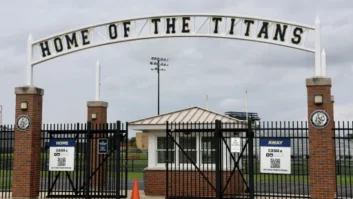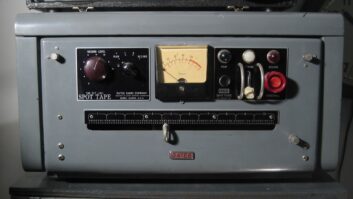 Amador Bustos is president and CEO of Bustos Media, owner of radio stations in Arizona, California, Texas, Washington state and Wisconsin. The stations mostly broadcast in Spanish but some offer English-, Chinese-, Korean-, Russian- and Vietnamese-language programming. He discusses the state of radio broadcasting and Bustos Media stations.
Amador Bustos is president and CEO of Bustos Media, owner of radio stations in Arizona, California, Texas, Washington state and Wisconsin. The stations mostly broadcast in Spanish but some offer English-, Chinese-, Korean-, Russian- and Vietnamese-language programming. He discusses the state of radio broadcasting and Bustos Media stations.
He was interviewed by Suzanne Gougherty, director of MMTC Media and Telecom Brokers at the Multicultural Media, Telecom and Internet Council. MMTC commentaries appear regularly in Radio World, which welcomes other points of view on industry issues.
Suzanne Gougherty: For more than a year the thirst for information regarding the pandemic has been at the forefront of news — how have your radio stations kept your audience informed on current news and information?
Amador Bustos: Since we are primarily a music intensive station group, and our DJs were working from home, they had to rely on news feed from our local newspapers and television stations. Besides our AM-drive top-of-the hour newscast, we expanded our pandemic coverage to live commentary and interviews with local health officials at any time of the day.
[Read: Keeping Sports Hot in the Age of Coronavirus]
Gougherty: What do you think is the most overwhelming challenge of the radio industry today, and where do you see the best opportunity for growth?
Bustos: The most pressing challenge for radio is the false assertion by social media outlets and digital audio competitors who are continuously forecasting the death of terrestrial radio. The best opportunity for revenue growth is in entertainment and event production. Due to the year-long isolation there is a strong pent-up demand for indoor concerts and outdoor festivals.
Gougherty: As a successful entrepreneur what was the motivating factor that led you to owning and operating radio stations?
Bustos: The opportunity to generate wealth. When I started buying radio stations the revenue margins were much higher. Secondly, to increase ownership diversity. I saw a rapidly expanding number of radio stations targeting the Hispanic market, but too few of us were represented in the ownership ranks. That continues to be true today.
Gougherty: It was reported that full power radio stations, plummeted at the end of 2020, on both the AM and FM dials. Do you feel the industry will experience the same decline in 2021? Do you think there is a solution other than to turn licenses back to the FCC?
Bustos: Yes! Radio revenues plummeted during the second and third quarter of 2020. However, the recovery during the last six months is encouraging. It is important that we make the distinction between AMs and FMs. Our AMs continue depressed. This year, I will likely return more than one AM license to the FCC for lack of sustainable revenue.
Gougherty: Should the FCC relax or retain the local AM and FM ownership caps and subcaps?
Bustos: The FCC should relax the ownership caps and subcaps. However, it should do it in two or three stages. First in markets above 100, then in markets above 50 and finally in all markets. At each stage the FCC should look at the unintended consequences of excessive concentration, negative impact on AM values, diminution of public service and ownership diversity trends.
Gougherty: What steps should Congress and the FCC take now to dramatically increase minority radio and television station ownership?
Bustos: Congress and the federal government can do two important things: 1) Reinstate the Minority Tax Certificate; which gives sellers a tax deferral if they sell to qualified diverse buyers; 2) Allow the SBA to do bank loan guarantees of up to $10,000,000 for the purchase of broadcast properties by qualified diverse borrowers/operators.
Gougherty: Spanish-language radio stations’ music formats have done well over the years. Do you feel there is room for other Spanish-language formats, talk, sports or news?
Bustos: There is room for those additional formats. However, they are more expensive to produce. That is why several past attempts have failed. It will take a well-capitalized and committed broadcaster to support such an effort. Just like iHeartMedia has done when it launched the Black Information Network in June 2020.
Gougherty:. During the recent roll-out of vaccines what kind of factual information have your stations provided to your listeners? And do you feel it has help to dispel the myths or misinformation that might be circulating in the Hispanic community?
Bustos: We have provided our audience information based on CDC’s guidance, as well as information provided by state and local health officials. Most of our on-air personalities are pro-vaccination and regularly speak in favor of it. When they are vaccinated, they disclose it and recommended it.
Gougherty: How has your sales team held up during the past year? And your on-air talent? Are all working from home or with strict measure at the work place? And as the owner how are you holding up?
Bustos: There is a clear sense of fatigue. Most employees are desirous of a return to the office. If things continue to trend well, we will likely have most employees return to an interactive, in-office work by June 2021.







